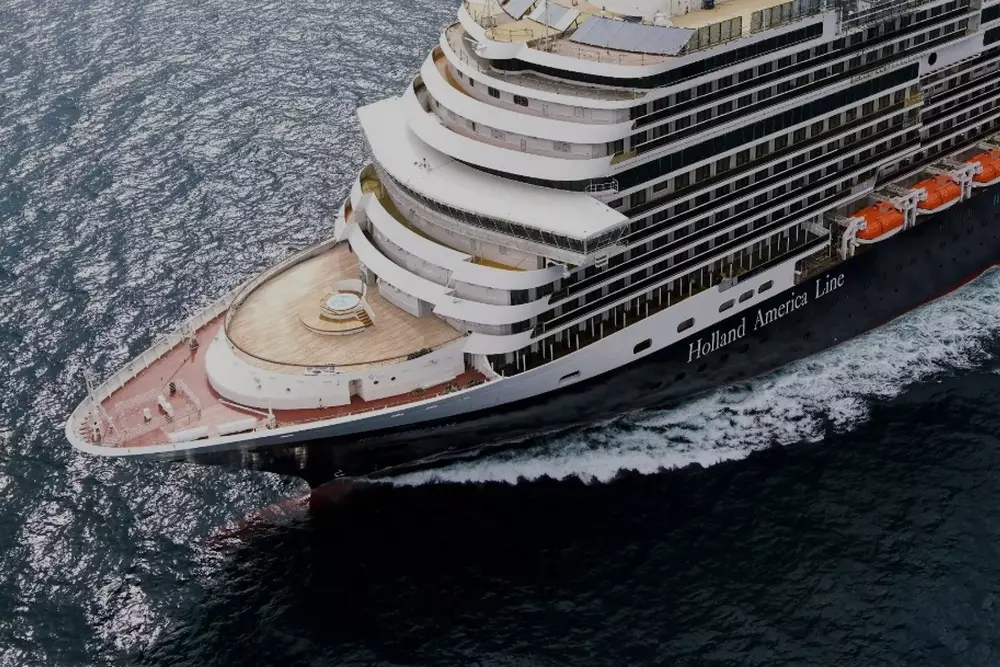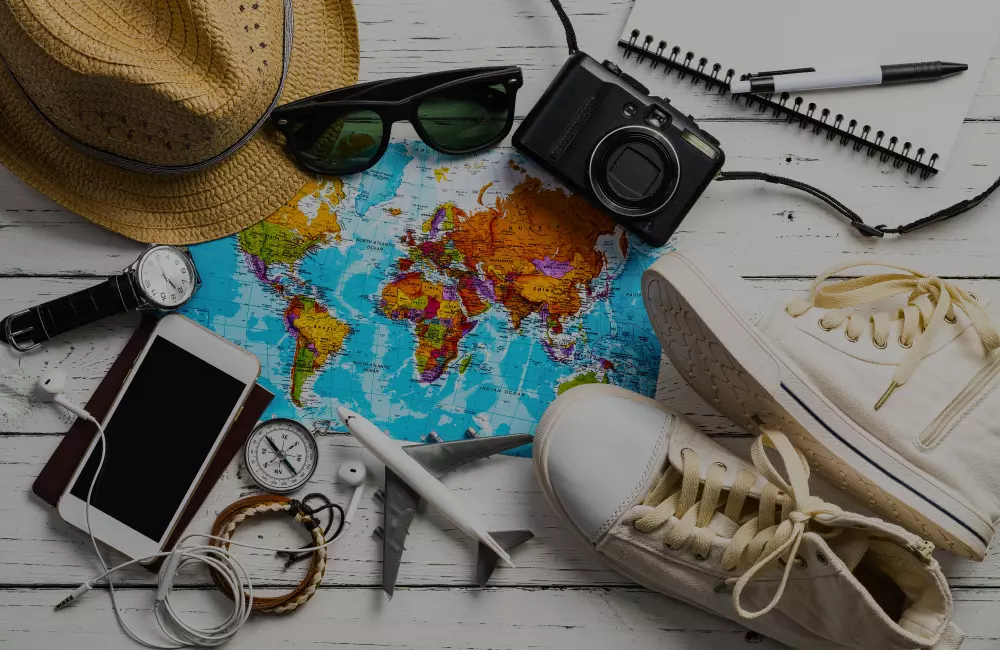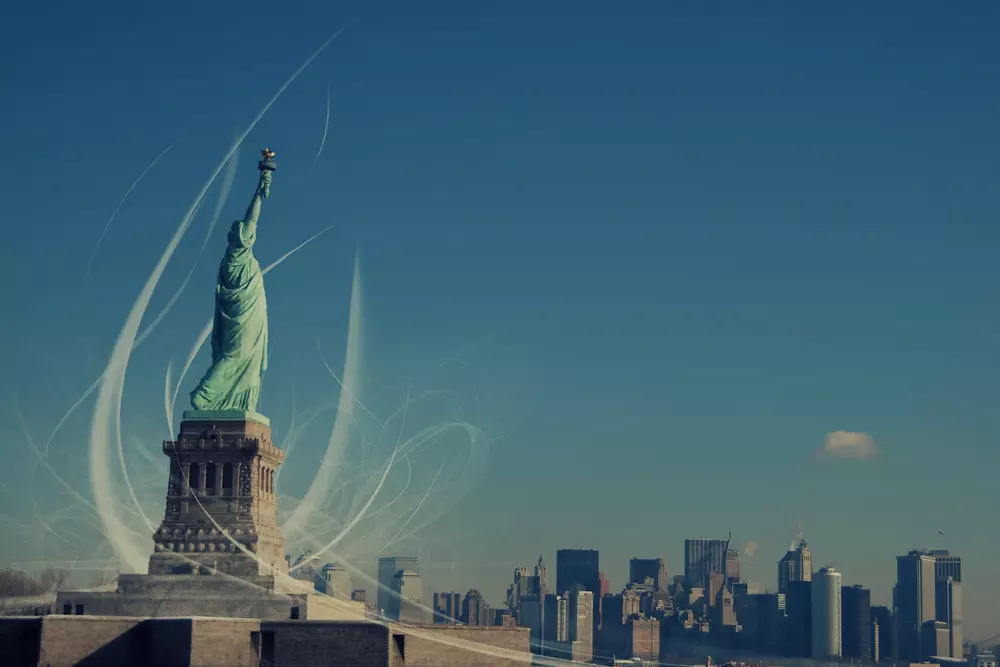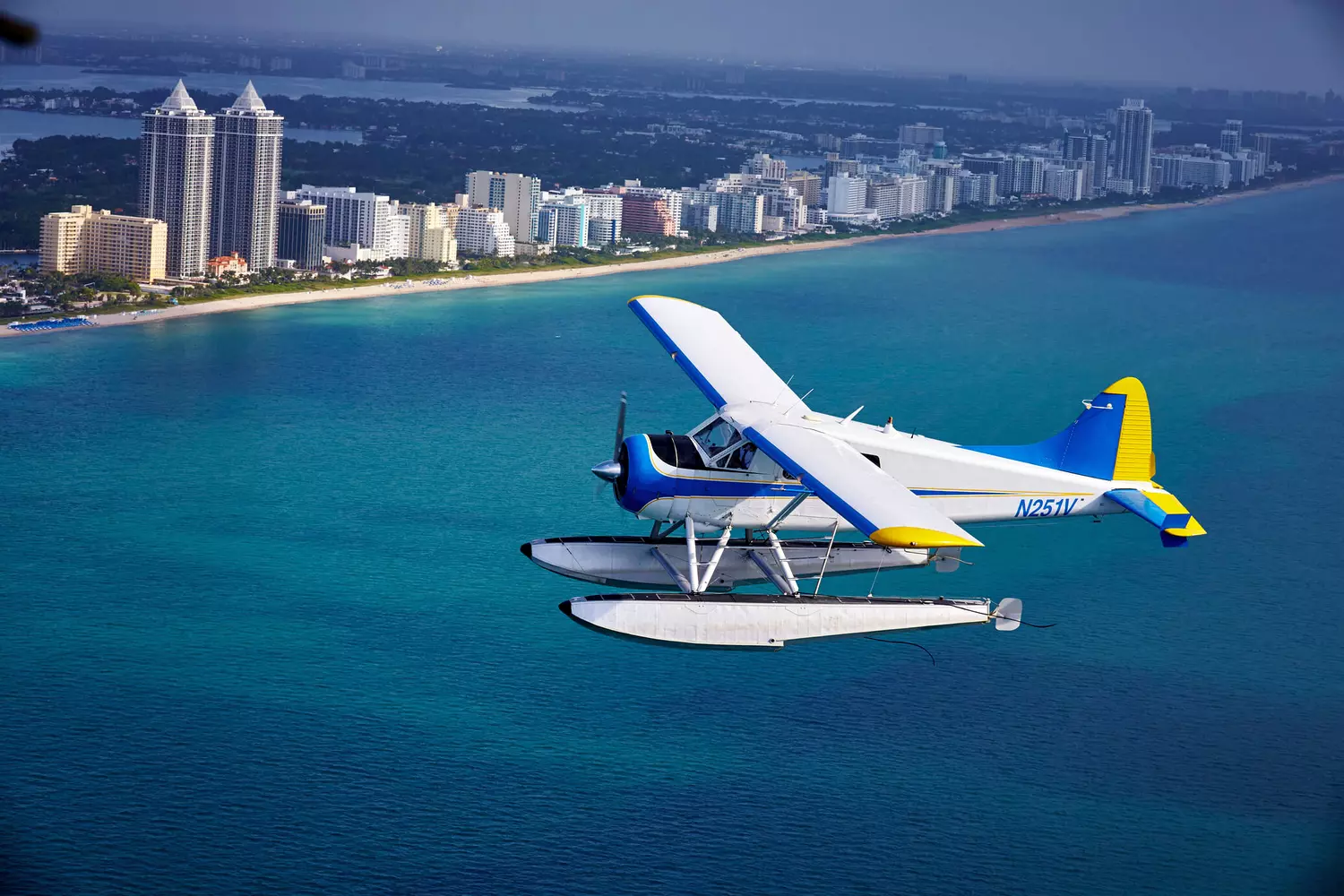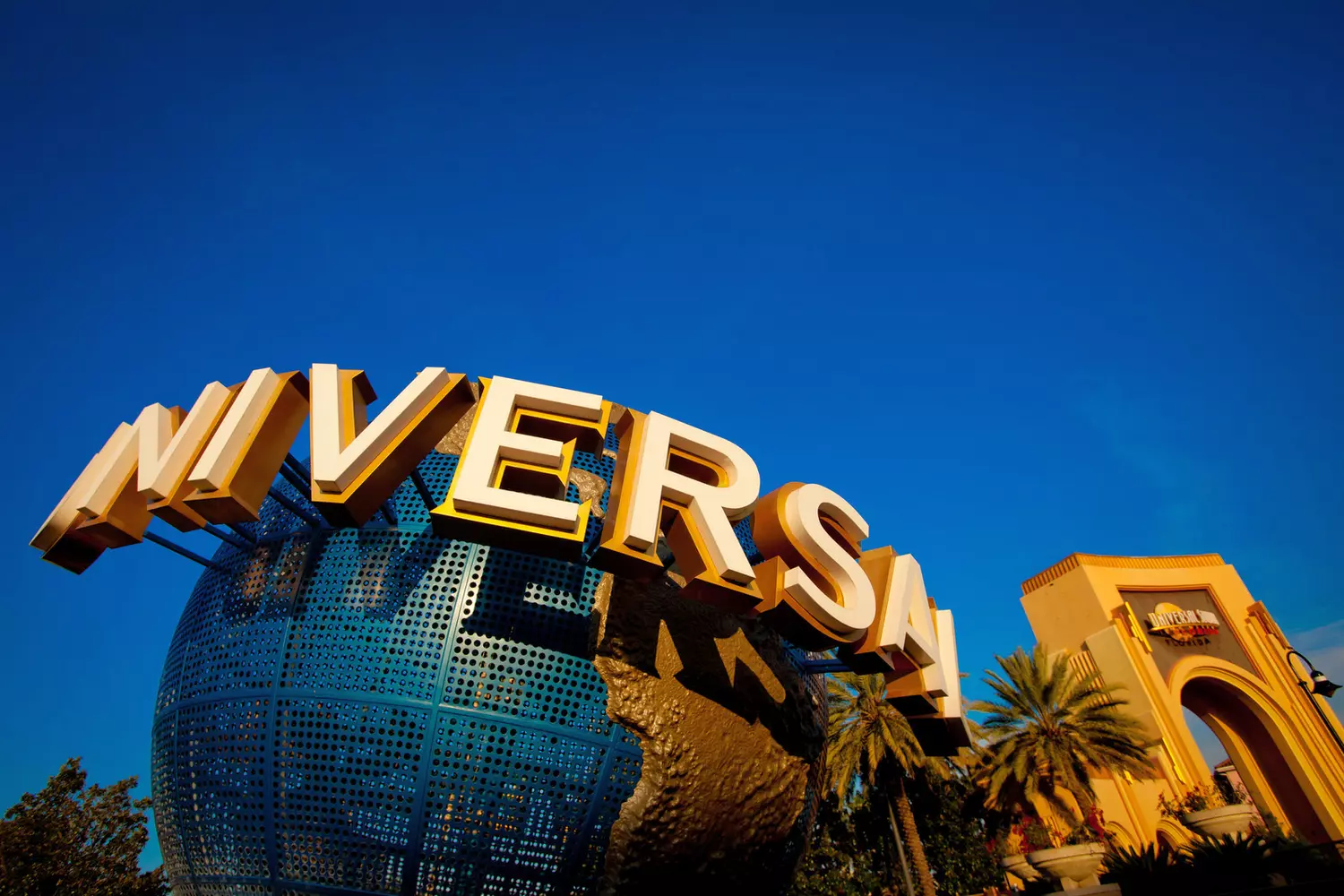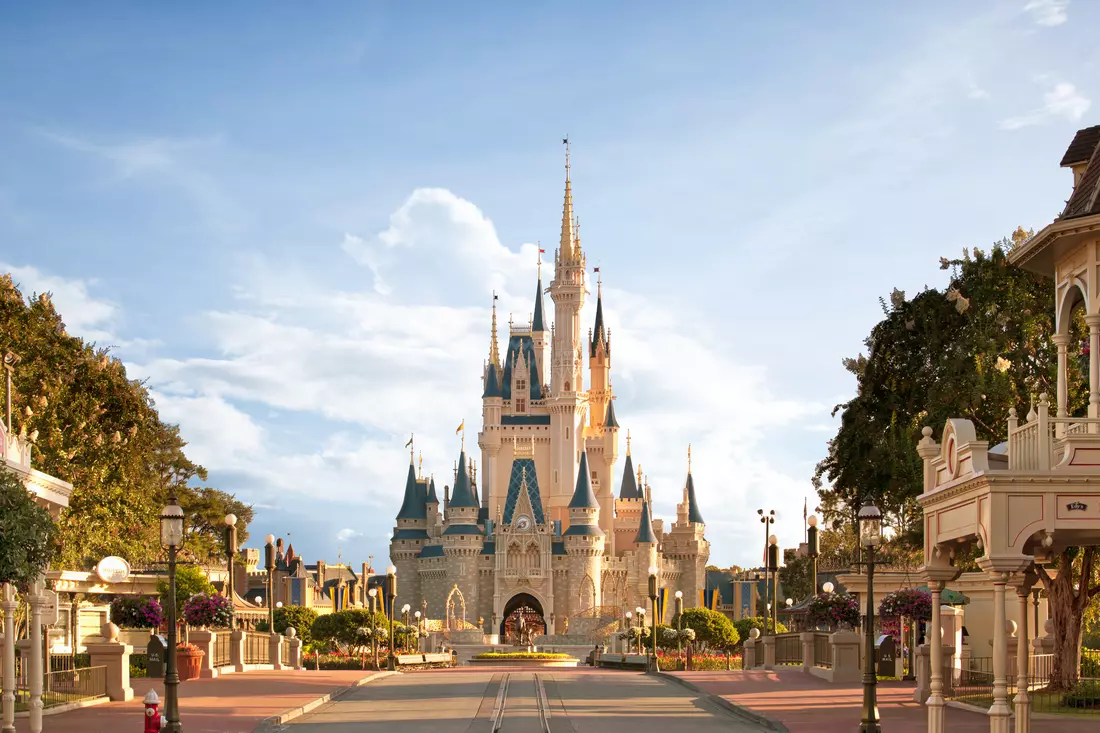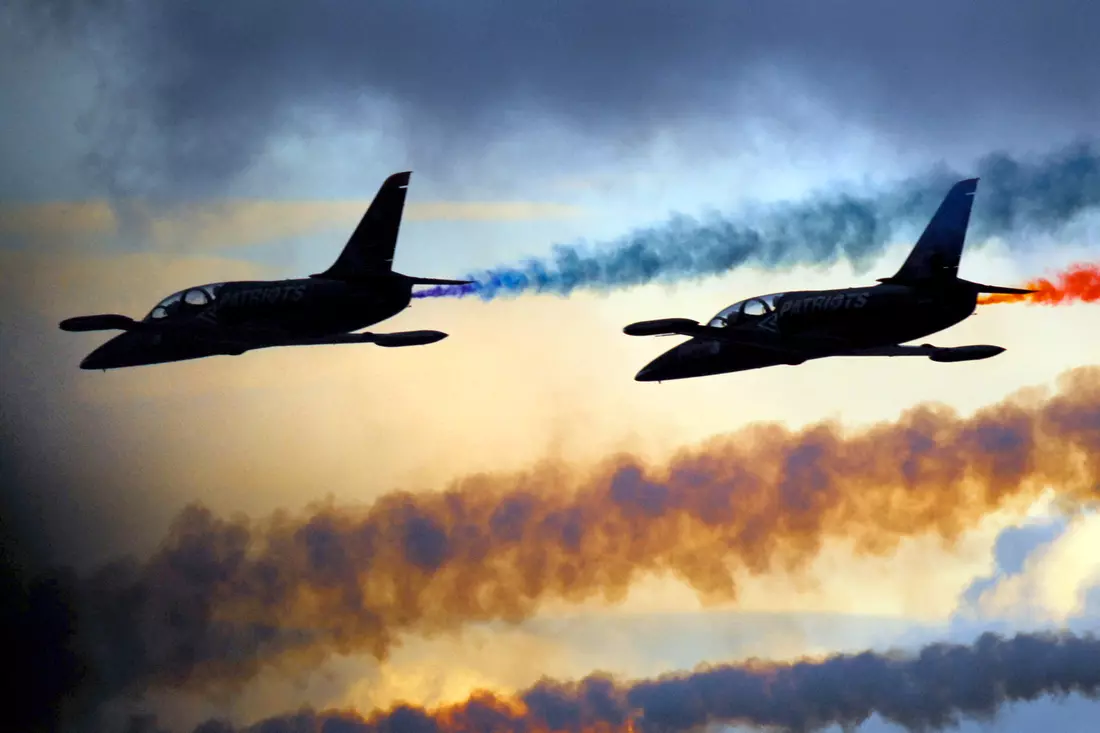America is not just the skyscrapers of New York, the sparkling beaches of Miami, or the endless highways. The true heart of this country flows through its lands in the form of mighty rivers. They were born in the mountains, carved their way through canyons, shaped valleys, and gave life to millions of people and animals.
Rivers of the USA are more than just geography. They are a living fabric of the country’s history. Long before a European set foot on the continent, native tribes traveled these waterways, fished, traded goods, and shared legends. When the first settlers arrived, the rivers became their lifeline and support: along them, the first towns were built, trade vessels sailed, and battles unfolded that would shape the fate of the future United States.
Today, in the era of skyscrapers and high-speed airplanes, the role of rivers might seem to have changed. But look closer, and they remain the main arteries of the country. The Mississippi carries millions of tons of grain, the Colorado provides light and water to the desert West’s metropolises, and the Yukon still preserves the spirit of explorers and the Gold Rush.
When speaking of the rivers of the USA, one cannot limit oneself to dry numbers of length or basin area. Each river tells its own story: of struggle and freedom, of beauty and danger, of nature’s power and human ingenuity. And in these stories, America itself is reflected — contrasting, vast, and full of energy.

The Mississippi–Missouri basin is so vast that it contains about 40% of all the fresh water in the United States. Scientists like to joke: “Whoever controls the Mississippi controls America.”
Geography of U.S. Rivers: The Water Network That Shapes the Nation
America is a continent in miniature, and its rivers reflect the full natural diversity of the country. Here you can find icy waterways in Alaska, calm plains rivers in the Midwest, roaring mountain rivers cascading from the Rocky Mountains, and fickle southern rivers that either dry up under the scorching sun or overflow their banks after the rainy season.
River systems in the USA shape not only the landscape but also the fate of its people. In the north, they become natural transport arteries when they freeze in winter, turning into ice roads. In the central regions, they create fertile lands, which helped America become one of the world’s agricultural leaders. In the west, they carve canyons and supply water and energy to megacities. In the south, they define borders and shape the climate of entire regions.
Interestingly, rivers played a key role in the country’s settlement. The first settlements were built along their banks, trade routes followed these waterways, and many cities still "face" rivers, as if drawing strength from them.
The vast extent of the USA makes its rivers incredibly diverse:
- In the north, in Alaska and the Great Lakes region, rivers freeze in winter and overflow in spring, reshaping the valleys;
- In the south, rivers may dry up, turning into dusty beds, but after rains they spring back to life with renewed force;
- In the west, rivers rush down from the mountains, forming waterfalls and canyons, as if nature itself is demonstrating the power of the elements;
- In the central part of the country, plains rivers are smooth and wide, creating fertile lands for centuries and turning the USA into one of the largest grain producers in the world.
The rivers of the USA are not just lines on a map. They are pulsing arteries that connect states, transform the landscape, and shape the character of an entire nation. To better understand how they influence American life, it’s worth exploring the largest and most significant of them.

Mississippi — The River That Built America
The Mississippi is more than just a waterway stretching from north to south across the country. It is the true lifeblood of America, its circulatory system, without which the history and culture of the USA cannot be imagined. With a length of over 3,700 kilometers and a basin covering nearly half the country, the Mississippi connects 10 states, thousands of cities, and millions of lives.
Its essence is constant motion: from the glaciers of Minnesota to the warm waters of the Gulf of Mexico. Along the way, the river gathers dozens of tributaries, transforming into a colossal water corridor where nature and civilization have learned to coexist side by side.
- 01. The river as an economic engine
The Mississippi has long been the country’s main transport artery.
- It carries grain, oil, timber, coal, and metal along its waters.
- Before the advent of railroads, it connected southern plantations with northern industrial centers.
- Today, barges and cargo ships traverse the river, providing millions of jobs.
- 02. A historical landmark
The Mississippi has often been a battlefield and a symbol of struggle.
- During the westward expansion, its banks were gateways to new lands.
- During the Civil War, the river was a strategic prize: the Battle of Vicksburg in 1863 determined the outcome of the entire campaign.
- Its waters remember fur traders, early settlers, and soldiers who held weapons for the country’s future.
- 03. Inspiration for culture
Mark Twain, who grew up on the Mississippi’s banks, turned it into a literary symbol of freedom and dreams.
- In The Adventures of Huckleberry Finn, the boy embarks on a journey along this river, which became a path to adventure for readers worldwide.
- The songs of Mississippi blues musicians inspired generations of artists, from Louis Armstrong to B.B. King.
- 04. The power and whims of nature
The Mississippi is both a support and a threat.
- It has changed its course more than 50 times over the past 5,000 years, leaving behind dry channels and new paths.
- Floods along its banks have destroyed cities — as in 1927, when hundreds of thousands of homes were submerged.
- Today, engineers build dams and canals to tame the "Father of Waters," yet it has never been fully subdued.
Interesting fact: Scientists say that without the system of levees and dams, the modern Mississippi would have long ago changed its course and flowed into a completely different part of the Gulf of Mexico, rather than New Orleans. This “rebellion of nature” could have completely reshaped the map of the American economy.
The Mississippi is a living legend. It unites the past and the future, labor and inspiration, danger and beauty. Stand on its banks, and you will understand: this is truly where the heart of America beats.

Missouri — The Guiding River of America
The Missouri is one of the greatest rivers in the United States and the longest tributary of the Mississippi. Stretching over 3,800 kilometers, it flows through eight states, linking the central plains with the southern and northern territories. The Missouri is a river of exploration, trade, and settlement — its waters served as a guide for generations of pioneers.
- 01. Natural Features
- The Missouri originates in the Rocky Mountains of Montana and flows across broad plains, carving deep canyons and meandering channels.
- The river collects numerous tributaries, gathering meltwater from the mountains and rainwater from the plains.
- Along its entire course, the Missouri creates unique ecosystems inhabited by salmon, catfish, ducks, and other waterfowl.
- 02. History and Exploration
- The Missouri was the main route for the expeditions of Lewis and Clark, who explored the western territories of the United States in the early 19th century.
- It connected territories for trade in furs, grain, and other goods, becoming a key factor in the economic development of the central United States.
- Along its banks, the first settlements, towns, and farms emerged, making the Missouri a river that helped shape civilization.
- 03. Economy and Transportation
- For a long time, the river served as the primary waterway for transporting goods until railroads and highways appeared.
- Today, the Missouri is used for navigation, irrigation, and hydroelectric power, supporting the lives of millions of people.
- Dams and canals help regulate its flow, prevent floods, and manage water resources efficiently.
- 04. Tourism and Adventure
- The Missouri attracts fishing enthusiasts, campers, and waterway explorers.
- Along its banks are the historic routes of Lewis and Clark, as well as natural parks with picturesque landscapes.
- Photographers and artists draw inspiration from its winding channels, calm stretches, and wide valleys.
Interesting fact: The Missouri is known as the "Great River of Exploration". The Lewis and Clark expedition first navigated its waters in 1804, discovering new lands and revealing to the world the richness of the flora, fauna, and peoples of the western territories. Today, you can follow their route and feel the spirit of the pioneers.
The Missouri is a guide river, a river of history and nature. It connects north and south, past and present, inspires discovery, and remains a living symbol of American exploration and courage.

Colorado — The Sculptor of Canyons and Lifeline of the Deserts
The Colorado River is one of the most famous — and at the same time most capricious — rivers in the United States. Stretching 2,330 kilometers, it flows through seven states and two Mexican regions, carving over millions of years one of the greatest natural wonders — the Grand Canyon. The Colorado is a river where the power of water meets the harsh beauty of deserts and mountains.
- 01. Natural Power and Geography
- The river originates in the Rocky Mountains of Colorado and flows southwest, crossing high passes, deep gorges, and narrow canyons.
- Along its course, it gathers tributaries carrying glacial meltwater, rainfall, and snowmelt, transforming into a raging stream capable of both destruction and creation.
- The Colorado sustains oases in the arid regions of Arizona, Nevada, and California — without its waters, life in these deserts would be impossible.
- 02. Economic and Energy Role
The Colorado River plays a key role for millions of Americans:
- Dams and reservoirs have been built along its banks, the largest being the Hoover Dam, supplying electricity to cities like Las Vegas, Los Angeles, and other major urban centers.
- Irrigation canals allow agriculture in regions that were once desert.
- The Colorado provides water for millions of people, sustaining the economy of entire states.
- 03. Tourism and Adventure
- The Colorado is not only a resource but also a major attraction for tourists:
- Rafting and kayaking on its rapids have become symbols of extreme recreation in the West.
- The Grand Canyon, carved by the river, draws millions of visitors from around the world each year.
- Hiking trails along the river offer views of rare desert flora and fauna, while photographers capture true masterpieces of nature.
- 04. Cultural Influence
The Colorado has inspired artists, writers, and filmmakers.
- Hollywood westerns often used its canyons as a backdrop for films about the Wild West.
- Photographers and painters have captured its rushing waters and dramatic rock formations, creating images that convey both power and beauty.
Interesting fact: Despite its seemingly harsh character, the Colorado follows its own rhythm: its waters are used unevenly, and its natural rapids create unique ecosystems. Scientists estimate that without human control, the river could have changed its course and completely dried out some southwestern oases.
The Colorado is both a beautiful and a shaping river. It sculpts the landscape, sustains life, and inspires adventure. Understanding its power helps appreciate how water shapes civilizations and cultures — and why America’s rivers are true heroes of the nation.

Rio Grande — Border, Culture, and Desert Life
The Rio Grande is one of the most famous rivers of the American Southwest. Stretching over 3,000 kilometers, it serves not only as a natural border between the United States and Mexico but also as a source of life for the arid lands of Texas, New Mexico, and the northern Mexican state of Chihuahua. This river is a symbol of cultural intertwining, survival, and the extraordinary power of nature.
- 01. Natural Features
- The river originates in Colorado and flows through mountain valleys and deserts before emptying into the Gulf of Mexico.
- Its flow is variable: in some areas rapid and turbulent, in others calm, reflecting the desert like a mirror.
- The Rio Grande sustains fertile oases where cotton, citrus, and vegetables grow — true “green islands” amid dry lands.
- 02. Historical and Cultural Significance
The Rio Grande has always been a border — not only territorial but cultural:
- Civilizations met along its banks: Native Americans, Spanish conquistadors, and American settlers.
- The river witnessed numerous treaties and conflicts that defined the modern boundaries of the U.S. and Mexico.
- For Mexicans and Americans alike, the Rio Grande is a symbol of cultural connection, trade, and shared history.
- 03. Economy and Regional Life
- The river provides water for agriculture, transforming ordinary deserts into fertile fields.
- Important irrigation canals and reservoirs along its course support the livelihoods of millions of people.
- The Rio Grande also serves as a tourist magnet: Big Bend National Park attracts nature lovers, rafters, and wildlife watchers.
- 04. Tourism and Adventure
- Rafting and kayaking on its rapids are popular ways to experience the desert landscapes of the Southwest.
- Hiking trails along the riverbanks allow visitors to see rare plants and animals, including hummingbirds, lizards, and unique cactus species.
- Photographers from around the world come to capture sunsets over the Rio Grande, where the water reflects the sky, creating spectacular landscapes.
Interesting fact: Despite human control, the river still lives its own life. During heavy rains, it can overflow its banks, reshaping the landscape, eroding soil, and creating new channels. Scientists note that such “rebellious” episodes help maintain the ecological balance of the region.
The Rio Grande is a guiding river. It connects peoples and cultures, nourishes deserts, and inspires travelers. It is not just a waterway but a living history of the American Southwest.

Columbia — The Mighty River of the Northwestern USA
The Columbia River is one of the most powerful and significant rivers in the Pacific Northwest of America. Stretching approximately 2,000 kilometers, it flows through the states of Washington and Oregon before emptying into the Pacific Ocean. Its importance goes far beyond geography: the Columbia is a source of energy, trade, history, and inspiration for the people living along its banks.
- 01. Natural Power and Geography
- The Columbia originates in Canada and flows into the Pacific Ocean, forming one of the largest river mouths on the continent.
- It is famous for its rapids and waterfalls, especially the renowned Horseshoe Falls, which impress visitors with their scale and force of water.
- Along the river lie dense forests and fertile valleys, where it creates favorable conditions for diverse flora and fauna.
- 02. Economy and Hydropower
- The Columbia is a true energy giant: more than 14 major hydroelectric plants have been built here, including the famous Grand Coulee Dam, one of the largest in the world.
- The region’s rivers supply electricity to millions of people and industries in the Pacific Northwest.
- The river supports agriculture, fishing, and transportation, making it a vital economic artery for the region.
- 03. History and Culture
- The river was an important route for Native American tribes in the Northwest: they used it for salmon fishing, trade, and cultural ceremonies.
- European explorers and pioneers traveled along the Columbia, discovering new lands and resources for future settlements.
- Today, its waters inspire artists, photographers, and writers who come to experience its unique landscapes and the power of nature.
- 04. Tourism and Adventure
- The Columbia has become a hub for rafting, kayaking, and hiking.
- Visitors can observe salmon migration, attracting not only biologists but also nature enthusiasts.
- National parks along the river offer tours to waterfalls, cliffs, and scenic gorges, giving the feeling of standing in the heart of wilderness.
Interesting fact: The Columbia is one of the fastest-flowing rivers in the U.S. It can carry enormous volumes of water, shaping new channels and altering shorelines, making it a true architect of the Pacific Northwest’s natural landscapes.
The Columbia is a river of power, energy, and life. It unites people, nature, and industry, shaping the unique character of the Pacific Northwest.

Yukon — The River of Wilderness and Northern Legends
The Yukon River is the true soul of Alaska. Stretching over 3,100 kilometers, it flows through the wild northern territories of the United States and Canada, emptying into the Bering Sea. The Yukon embodies wilderness, freedom, and the stark beauty of the northern landscape. It remains a place where humans can feel part of a vast, untamed world.
- 01. Natural Features
- The Yukon originates in the Canadian mountains and rushes through icy valleys and taiga forests, forming both turbulent rapids and calm stretches.
- The river is surrounded by endless tundras and forests, home to brown bears, moose, eagles, and foxes.
- Its waters remain nearly pristine, and the riverbed retains its wild character, reflecting the rhythm of untamed nature.
- 02. History and Exploration
- The river played a key role during the Yukon Gold Rush in the late 19th century, drawing prospectors from around the world hoping to strike it rich.
- Alaska’s Indigenous peoples used the Yukon for fishing, hunting, and travel between settlements for centuries.
- Today, the river remains a cultural symbol for native communities, preserving their connection to traditions and the land.
- 03. Economic and Practical Role
- The Yukon provides water to remote settlements that would otherwise be isolated from civilization.
- It remains vital for fisheries, particularly salmon, which migrate upriver to spawn every year.
- The harsh climate and strong currents limit industrial use, which helps keep the river nearly untouched and unique.
- 04. Tourism and Adventure
- The Yukon is a paradise for wilderness and adventure enthusiasts, offering rafting, kayaking, hiking, and fishing.
- Along its banks, travelers can observe animal migrations, including herds of caribou and bears, making the journey a true immersion in the wild.
- Photographers from around the world come to capture the Northern Lights reflected in the calm waters of the river.
Interesting fact: During the Yukon Gold Rush, prospectors often followed the river in search of fortune. Yet the river remained unpredictable: raging rapids and icy waters turned every journey into a real test, endured only by the most resilient.
The Yukon is a river of pristine power and freedom. It preserves ancient traditions, sustains life in harsh northern conditions, and shows the grandeur of nature when left undisturbed.

Other Famous and Remarkable Rivers of the USA: From Megacities to Untamed Wilderness
America is a country where every river has its own unique story and character. Beyond the Mississippi, Missouri, Colorado, Rio Grande, Columbia, and Yukon, the U.S. is home to numerous other rivers that have played a significant role in shaping the nation’s culture, economy, and natural environment. These waterways may be shorter in length, but their influence, beauty, and historical significance make them true gems of the American landscape.
- 01. Snake River — the power of the Northwest
The Snake is the largest tributary of the Columbia River, stretching over 1,700 kilometers.
- The river flows through Idaho, Oregon, and Washington, carving deep canyons and rapids, perfect for rafting.
- Snake has become a center of hydroelectric power, supplying electricity to millions of people.
- Along its banks, traces of ancient Indigenous tribes can still be seen, who for centuries relied on the river for fishing and trade.
- 02. Chicago River — the engineering marvel of a metropolis
- The riverbed was reversed in the early 20th century so that water would flow into Illinois and then the Mississippi, preventing epidemics and supplying the city with water.
- Today, the Chicago River is a hub of tourism: boat tours, riverwalks, and cultural events make it a favorite spot for residents and visitors alike.
- 03. Savannah River — southern beauty
- Flowing through Georgia and South Carolina, it is known for its scenic banks and historic cities.
- Along its shores stand old mansions, bridges, and parks, creating the charm of the South.
- Today, Savannah River is popular for cruises, kayaking, and wildlife observation, including herons and alligators.
- 04. Allegheny and Monongahela Rivers — Pennsylvania’s industrial heritage
- These rivers played a key role in the Industrial Revolution, transporting coal, steel, and industrial goods.
- Their banks are lined with historic factories and towns, where the industrial boom is still visible.
- Today, the rivers are used for tourism, fishing, and ecosystem support.
- 05. Charles River — symbol of New England
- Flowing through Massachusetts, it is famous for key events in the American Revolution.
- Boat tours run along the river, and its banks are adorned with parks, universities, and cultural centers.
- The Charles has become a symbol of Boston’s history and modern lifestyle.
- 06. Delaware River — a path to historic roots
- The Delaware flows through Pennsylvania, New Jersey, and Delaware, serving as a historic route for early European settlements.
- Along its banks, you can see old towns, lighthouses, and colonial-era trading posts.
- Today, the Delaware is popular for fishing, kayaking, and eco-tourism.
- 07. Tennessee River — the southern waterway
- The Tennessee flows through Alabama, Tennessee, and Kentucky, connecting rural areas with industrial centers.
- Dams and hydroelectric stations along the river supply millions of homes and businesses with energy.
- The river is also known for its scenic banks and popularity among tourists and anglers.
Interesting fact: In many U.S. rivers — from the Snake to the Delaware — water constantly changes its course and reshapes the banks. Scientists joke: “America’s rivers never stand still — just like the country itself.”
These rivers show that the U.S. is more than just the Mississippi and Colorado. Each waterway shapes culture, sustains life, and connects nature with people, creating a unique, living continent.

Rivers of the USA: Pathways of History and Arteries of Civilization
Rivers have played a fundamental role in shaping the United States. Long before railroads and highways existed, they were the country’s main “highways,” connecting people, cultures, and regions. Waterways carried life, transportation, and strategic value, determining the fate of peoples and the development of the nation.
- 01. The role of rivers for Indigenous peoples
For Native Americans, rivers were much more than just a source of water:
- Food and sustenance
They fished in rivers, collected crayfish, hunted animals that came to drink, and gathered edible plants. - Trade
Waterways connected tribes, allowing them to exchange goods and knowledge. - Spiritual significance
Rivers were considered sacred. Some tribes believed spirits of ancestors and natural forces resided in their waters. - Transportation
Canoes and boats allowed them to traverse vast territories faster than on foot through forests and mountains.
- 02. The role of rivers for colonists and pioneers
With the arrival of Europeans, rivers became key routes for settlement and trade:
- Trade and transport
Colonists used rivers to carry grain, timber, furs, and other goods. - Territorial expansion
Rivers allowed penetration deep into the continent, opening new lands for settlements and agriculture. - Economic development
Many cities grew along riverbanks — Boston, Chicago, New Orleans, Pittsburgh. Rivers supplied industry with water, transportation, and energy.
- 03. Strategic importance of rivers
Wars and conflicts also demonstrate rivers’ role as strategic boundaries:
- During the Civil War, control of the Mississippi and other major rivers was a critical factor for victory.
- Rivers were used to supply armies and move troops.
- Dams, locks, and natural rapids turned rivers into natural defensive lines.
As Henry Adams wrote: “Who controls the rivers, controls the country.” This phrase captures the essence: ownership of waterways meant economic, cultural, and military power.
Interesting fact: Historians note that many modern U.S. roads follow ancient river routes. Even today, transportation often mirrors the paths used by people traveling by canoe and boat hundreds of years ago.
Rivers have been and continue to be the heart of America — connecting peoples, bringing wealth, serving as protection, and inspiring generations.

Rivers of the USA: Economic Power and Resource Wealth of the Nation
Rivers of the USA are not only natural beauties and historical arteries but also true engines of the economy. For centuries, they have provided transportation, energy, food, and resources for millions of people. Today, their importance continues to grow, especially with modern industrialization, agriculture, and tourism.
- 01. Transportation and logistics
- Cargo transport
Rivers remain key transportation routes for shipping grain, coal, oil, and construction materials. For example, millions of tons of grain pass through the Mississippi each year, destined for export worldwide. - Cost reduction
Water transport saves on logistics costs and reduces the load on highways and railroads. - Major ports and locks
River ports — such as New Orleans, St. Louis, and Savannah — are major trade centers and hubs for domestic and international exports.
- 02. Agriculture and irrigation
- Rivers provide water to millions of hectares of farmland.
- In southern and central states, river water enables the cultivation of corn, soybeans, cotton, fruits, and vegetables.
- Irrigation systems based on rivers transform arid regions into fertile oases, increasing yields and stabilizing the nation’s food resources.
- 03. Hydropower
- Many American rivers are used to generate electricity through hydroelectric plants.
- Dams on the Columbia, Snake, Tennessee, and other rivers supply electricity to millions of homes, reducing dependence on coal and oil.
- Hydropower not only provides energy but also helps regulate water flow, prevent floods, and support navigation.
- 04. Tourism and fishing
- Rivers attract millions of tourists: rafting, kayaking, fishing, cruises, and excursions are important components of the local economy.
- Fishing supports both commercial and recreational interests: salmon, catfish, trout, and cod provide income and gastronomic tourism opportunities.
- National parks and reserves along rivers create jobs for guides, rangers, and service personnel.
- 05. Impact on the national economy
- Experts estimate that the Mississippi River basin alone contributes hundreds of billions of dollars annually to the U.S. economy.
- River systems support industry, agriculture, transportation, and tourism, forming the foundation of domestic markets and export potential.
- Rivers remain a connecting link between regions, promoting economic integration and infrastructure development.
Interesting fact: Many major American companies, especially in agriculture and logistics, locate their production facilities near rivers. This allows them to reduce costs, ensure a steady water supply, and transport goods with minimal losses.
Rivers of the USA are not only natural treasures but also real economic assets affecting millions of lives. They support production, transport, and energy, enable the prosperity of rural and urban regions, and remain a driving force of the nation.

Rivers in American Culture: Water, Inspiration, and the Symbol of Freedom
Rivers of the USA are not just natural arteries and economic resources. They have deeply permeated the country’s culture, serving as a source of inspiration for writers, musicians, artists, and filmmakers. For Americans, a river symbolizes life, movement, freedom, and unpredictability, reflecting the national character.
- 01. Literature
- The Mississippi in Mark Twain’s works is perhaps the most famous literary image of a river. In The Adventures of Huckleberry Finn, it serves not only as a backdrop but also as a symbol of freedom, the journey to adulthood, and the search for self.
- Rivers in literature often become characters themselves: changeable, mighty, and inspiring adventures.
- Many contemporary authors exploring American identity continue to use rivers as metaphors for journeys and personal growth.
- 02. Music
- The Rio Grande and country music: dozens of songs celebrate the Rio Grande, praising borders, love, and freedom, capturing the spirit of the American South and West.
- Rivers often serve as musical symbols of movement, change, and nostalgia for childhood and homeland.
- In jazz and blues, rivers (especially the Mississippi) inspired composers to create melodies that convey the rhythm and pace of life along the water.
- 03. Film and visual arts
- The Colorado River in Hollywood westerns — powerful mountain streams and canyons create drama, danger, and freedom, emphasizing the character of the heroes.
- Rivers are used in cinematography as natural lines that guide the viewer’s eye, creating dramatic and picturesque compositions.
- Artists and photographers celebrate rivers in landscapes, capturing their changing nature, reflections, and the power of the current.
- 04. Rivers as symbols of national character
- Americans see rivers not just as physical entities but as part of their national identity.
- Free, strong, unpredictable, and sometimes dangerous, rivers embody the spirit of independence, the quest for discovery, and respect for nature.
- For both Indigenous peoples and modern Americans, a river is simultaneously a path and a destination, a challenge and a source of inspiration.
Interesting fact: The Mississippi is so ingrained in American culture that its name is used for music festivals, restaurants, hotels, and brands. The river has become part of the nation’s collective memory, symbolizing travel, adventure, and freedom.
Rivers of the USA are living symbols of the country, inspiring literature, music, art, and film. They shape the cultural landscape as profoundly as the geographical one, reminding people of freedom, strength, and the beauty of nature.

Rivers of the USA: Travel, Adventure, and Unforgettable Experiences
Rivers of the USA are not only natural arteries and historical witnesses but also major hubs for tourism. Every traveler can find something for themselves along America’s waterways: from calm sightseeing trips to extreme adventures. River routes allow visitors to see the country from a new perspective, feel its spirit, and enjoy the beauty of nature.
- 01. Mississippi River Cruises — Step Back into the 19th Century
- A steamboat journey on the Mississippi is a unique way to immerse yourself in the past. Classic paddlewheel boats with wooden decks and jazz music create the atmosphere of old America.
- Cruises pass through historic towns, vineyards, plantations, and scenic riverbanks, where nature remains largely untouched.
- Guests can enjoy guided tours, local cuisine tastings, live concerts, and evening parties on deck.
- 02. Rafting and Kayaking on the Colorado — For the Brave and Active
- The Colorado River is famous for its rapids and canyons, especially around the Grand Canyon.
- Rafting on the Colorado is a true test of strength, agility, and teamwork.
- Tourists can choose routes by difficulty: from gentle floats for beginners to extreme courses for professionals.
- Additional activities include canyon trekking, tours of historic petroglyphs, and wildlife observation.
- 03. Walks and Tours along the Hudson
- The Hudson River in New York is perfect for cultural and leisurely tourism.
- Boat trips, yachts, and sailboats offer views of Manhattan skyscrapers, historic waterfronts, and bridges.
- Along the Hudson are parks, art galleries, restaurants, and wineries with panoramic river views.
- Biking and walking trails, guided tours of historic estates, and botanical gardens are also available.
- 04. Fishing and Hunting in Alaska
- The Yukon and other northern rivers offer unique fishing opportunities.
- Salmon, trout, catfish, and other species attract sport fishing enthusiasts from around the world.
- Fishing in Alaska is not just about the catch — it’s a chance to enjoy pristine nature, observe bears, deer, and eagles in their natural habitat.
- Additional activities include hiking, canoeing, and wildlife photography safaris.
- 05. Tourism on the Columbia and Snake Rivers
- In the Pacific Northwest, the Columbia and Snake rivers offer scenic routes for small boat and sailing cruises.
- Popular activities include salmon fishing, windsurfing, kayaking, and waterfall tours.
- River canyons and rock formations make these routes especially picturesque for photographers and nature lovers.
- 06. Chicago River and Suburban Water Routes
- Besides cultural tours, the Chicago River offers guided historical excursions, evening dinner cruises, and music shows.
- In the suburbs, visitors can enjoy boat tours, fishing, and SUP board rentals for active recreation.
- 07. Eco-tourism and Wildlife Observation
- River routes pass through national parks and reserves, where tourists can observe bird migrations, wildlife, and rare plants.
- Hiking along rivers, camping on riverbanks, and photography tours allow full immersion in the wilderness.
- Many tourist programs include educational components about ecology, history, and local communities.
Interesting fact: Every year, historical steamboat festivals are held on the Mississippi, featuring 19th-century reenactments, dance workshops, live music, and traditional cuisine. This experience combines history, culture, and stunning natural views.
Rivers of the USA are not just water and banks — they are living tourist routes offering travelers unique experiences: from calm cruises to extreme rafting, from fishing and kayaking to cultural tours and wine tastings. They blend nature, history, and culture, making every visit unforgettable and diverse.

A River as a Living Organism: Ecological Challenges and the Future of the USA’s Waterways
Rivers of the USA are not just historical and cultural symbols, economic arteries, or tourist routes — they are living ecosystems, crucial for the health of nature and the well-being of millions. Modern challenges, however, threaten their existence and demand urgent action.
- 01. Pollution and Industrial Risks
- Many rivers flow through industrial zones, where waste discharge, chemicals, and sewage disrupt natural balance.
- Metals, pesticides, and petroleum products accumulate in water and sediments, affecting flora and fauna.
- For example, the Hudson River and parts of the Mississippi suffered severe pollution in the 20th century, leading to massive fish die-offs and reduced water quality for communities.
- 02. Droughts and Climate Change
- Rivers in the Southwest, especially the Colorado, face severe water shortages due to droughts and climate change.
- Drying rivers threaten irrigation systems, hydroelectric power, and agriculture.
- Solutions require more rational water management and the adoption of modern technologies for conservation and efficient use.
- 03. Declining Fish Populations and Biodiversity
- Pollution, dams, and overfishing have led to declines in many fish species.
- Salmon, trout, and catfish in northern rivers face challenges in spawning due to disrupted natural migration routes.
- This reduces not only the economic but also the ecological potential of rivers, affecting the entire surrounding ecosystem.
- 04. Conflicts over Water Use
- Rivers in the USA are strategic resources, and disputes often arise between states and cities over water rights.
- Irrigation, industry, hydroelectric power, and tourism require coordinated management to prevent social and economic conflicts.
- Environmental organizations advocate for laws and agreements that balance human needs with natural preservation.
- 05. Conservation Efforts
- Scientists, environmental groups, and activists work continuously to clean rivers, restore fish populations, and protect riverbanks.
- Programs include industrial wastewater treatment, construction of fish passages, and ecological monitoring.
- School and city initiatives educate youth about respecting nature and promote eco-tourism.
Interesting fact: Scientists estimate that restoring the Colorado River and its tributaries could bring back about 40 fish species and preserve thousands of hectares of fertile land for agriculture.
Rivers of the USA are complex, living systems that require care and respect. Protecting their cleanliness, biodiversity, and natural power is an investment in the country’s future, supporting its economy, culture, and public health.

Unknown Faces of America: Surprising Facts About Rivers That Will Amaze You
Rivers of the USA are not just geographical features, but living arteries that hold thousands of years of history, natural wonders, and engineering mysteries. They witnessed the gold rush, inspired great writers, caused disasters, and became objects of reverence. Discover a world where rivers change their course, catch fire, connect oceans, and their names tell entire stories.
- 01. The river that connects two oceans
In the state of Wyoming, there is a unique creek that splits into two streams. One flows westward, joining the Snake and Columbia Rivers to reach the Pacific Ocean, while the other flows eastward, passing through Yellowstone, the Missouri, and the Mississippi to the Atlantic Ocean. Although it is not navigable, it serves as an important migration route for fish — a true natural water bridge between continents. - 02. The river that caught fire
The Cuyahoga River in Ohio entered history as a waterway that repeatedly caught fire in the 20th century due to severe industrial pollution and untreated sewage. Fires occurred at least five times between 1868 and 1969. This shocking environmental crisis led to the landmark Clean Water Act of 1972. - 03. Slow power and reverse flow
The Mississippi, one of the world’s longest rivers, has deceptively slow currents — about 2 km/h, comparable to a leisurely walk. Its journey from source to the Gulf of Mexico takes 2–3 months. Even more astonishing is its ability to flow backward! Strong hurricanes can temporarily reverse the river's direction for several days. - 04. Cradle of biodiversity and migrations
The Mississippi River basin is a crucial ecological hub of North America. Approximately 25% of all fish species on the continent live here. Moreover, it serves as a migratory corridor for two-thirds of all North American birds, making it critically important for preserving wildlife across the continent. - 05. The river featured on postage stamps
The United States Postal Service (USPS) issued a series of stamps called “Wild and Scenic Rivers” to highlight their ecological value. These include California’s Merced River, flowing through Yosemite and formerly the center of the gold rush, and the Snake River, along which humans have lived for 11,000 years and where visitors can observe massive salmon migrations. - 06. The river named after a copper boulder
The small Ontonagon River in Michigan (only 25 miles long) is named after a unique find — a giant copper boulder weighing 3,708 pounds (Ontonagon Boulder). Discovered in the 19th century, it became such a significant artifact that since 1843 it has been strictly protected and can now be seen at the Smithsonian Institution in Washington, D.C. - 07. Underwater forests of the Great Lakes
On the floor of the Great Lakes, essentially freshwater seas, lie sunken ships. That’s not all. After dams were built in the St. Lawrence River system (the main outlet of the lakes), water levels rose, flooding coastal forests. Today, divers can explore ghostly “underwater forests” with trees standing on the bottom for over a century, creating surreal and slightly eerie landscapes. - 08. The river that flows north (and that’s normal)
Contrary to popular myth, rivers do not have to flow south. A notable example is the mighty Nile. In the U.S., one of the best-known “north-flowing” rivers is the Fox River in Wisconsin, which connects Lake Winnebago with Lake Michigan, flowing north. The St. John River in Florida even reverses its course twice along its path, creating winding loops.
Its main peculiarity, however, is not this. Due to an extremely small elevation drop over its length (less than 9 meters over 500 km), its flow is sluggish and depends more on wind and Atlantic tides than gravity. During dry periods, the river can change direction multiple times a day, literally confusing fishermen and tourists. - 09. The shortest river in the world (according to the Guinness Book of Records)
The Roe River in Montana was officially recognized by the Guinness Book of Records in 1989 as the world’s shortest river. Its length is only 61 meters (201 feet). It flows from the massive Giant Springs and almost immediately joins the Missouri River. Although this record is no longer tracked to avoid disputes, Roe remains famous for this curious title. - 10. The river born in one night
The Los Angeles River, now confined within concrete banks, has a dramatic origin. It took its current course not over thousands of years of erosion, but literally in one night in 1825. A powerful flood forced the river to change its course, destroying a natural freshwater lagoon and carving a new path to the Pacific Ocean. This event permanently altered the region’s landscape and ecosystem. - 11. The American Amazon
The Atchafalaya River in Louisiana is not just a tributary of the Mississippi, but the largest riverine swamp basin in the U.S. It forms the country’s biggest wetlands with incredible biodiversity. Often called the “American Amazon” due to its labyrinth of channels, lakes, and swamps, it is home to alligators, rare birds, and unique plants. It also serves as a crucial buffer, absorbing floodwaters from the Mississippi. - 12. The river glowing in moonlight
The Merced River, flowing through California’s Yosemite Valley, is famous not only for its beauty. During certain times of the year, under a full moon, the river reflects light like a perfect mirror, creating the illusion of a “glowing” or “liquid silver” stream. This phenomenon, known as a “lunar rainbow”, attracts photographers and romantics from around the world. - 13. The river that divided a nation
During the U.S. Civil War (1861–1865), the Potomac River gained enormous strategic and symbolic importance. It was not only the front line between the Union and the Confederacy, but it literally divided the Union capital (Washington) from Confederate Virginia. Soldiers on opposite sides could see each other’s campfires, and its crossings became sites of fierce battles, making the Potomac one of the most militarized rivers in history. - 14. The river that inspired Sherman
The famous March to the Sea by General William Sherman during the Civil War, which largely determined the North’s victory, is directly linked to the Savannah River. Sherman’s army deliberately moved along the river basin, using its valley as a source of food and a natural guide. The success of this unprecedented campaign was partly enabled by the resources provided by this river system. - 15. The icy canyon at the edge of the world
The Kobuk River in Alaska is an Arctic wonder. It is famous for its massive sand dunes, the largest in the world located above the Arctic Circle. Its main mystery is the polynyas — areas of open water that remain unfrozen even in extreme cold down to -50°C. These geothermal-heated sections provide critical refuge for wintering waterfowl and other Arctic wildlife. - 16. The most protected river in the world
The Potomac River, flowing through Washington, D.C., has a unique legal status. Due to its strategic location and historical role, many restrictions apply along its banks. The most unusual is a complete ban on low-flying aircraft over the section near the White House and other government buildings. This may make it the most heavily protected river from the air on the planet.
The Potomac also hides a unique architectural trick. The famous Capitol building with its majestic dome stands not on solid rock, but on marshy soil. To stabilize the ground, engineers diverted the nearby Tiber Creek into an underground tunnel. Today, this forgotten creek, once navigable, flows beneath the National Mall, with only a small manhole revealing its presence. - 17. The invisible river
In Tennessee, a unique geological phenomenon occurs — the Lost River. It flows almost entirely underground through caves and karst formations, surfacing only briefly before disappearing again. Its true course and source are still not fully known, justifying its mysterious name. - 18. The boiling river from Amazonian legends… in the USA
Deep in central Louisiana forests flows the small but enigmatic Bayou Corne. In 2012, it was the site of the largest man-made disaster in U.S. history: a collapsing salt dome, developed by a company, created a massive sinkhole that swallowed part of the forest. Even more eerie, methane bubbles and chemically heated water patches produced the effect of a “warm river” in the disaster zone. - 19. The river carved from stone
In Arizona, the Little Colorado River is mostly a dry stone bed etched into red sandstone. Water appears only episodically after rains or snowmelt, briefly transforming into a raging, dangerous stream. This is a prime example of ephemeral rivers, which shape landscapes while remaining almost invisible most of the time. - 20. The river monster of the Great Lakes
Legends of water monsters are not unique to Scotland. In the St. Lawrence River system, connecting the Great Lakes to the Atlantic, locals and fishermen have told stories for centuries of “Memphre” — a mysterious giant serpent-like creature inhabiting Lake Memphremagog. While its existence is unproven, the legend is so enduring that the town of Newport erected a monument, and festivals are regularly held along the river in its honor.
Each of these rivers is not just a blue line on a map, but a living organism with its own character, history, and secrets. They have witnessed the rise and fall of civilizations, and their waters continue to tell these stories to all who are willing to listen.

American Butler Invites You on a Water Journey
Rivers of the USA are a living history that can be not only studied on maps but also felt. Each river is a path leading to new experiences: whether it’s the majestic Mississippi, the wild Yukon, or the colorful Colorado.
If you want to see America not only through the eyes of a tourist but also as an explorer, rivers will be the perfect route.
We organize for you:
- Private tours along the scenic rivers of the USA;
- Cruises, rafting trips, and excursions;
- Itineraries with a personal guide and transfer services.
With American Butler, you will discover America from a new perspective — from the perspective of its rivers.














